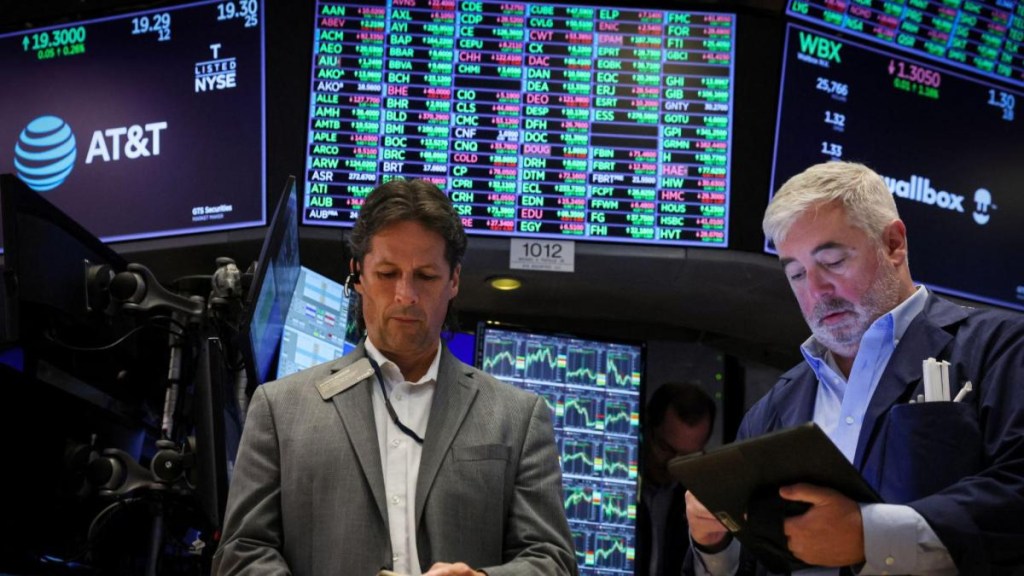After weeks of turbulence, global stock markets have found a temporary lifeline. The brokerage firm UBS believes this might just be the calm before another storm.
As of now many know that in a dramatic mid-week rally, the S&P 500 soared by 9.5% – its biggest single-day gain since the 2008 financial crisis as US President Donald Trump announced a 90-day pause on reciprocal tariffs for countries that had not retaliated against earlier trade measures.
Moreover, this surprise policy shift has sparked a wave of optimism across the Asian and European markets, blinking it green. However, the brokerage firm UBS cautions that risks remain, especially with China still under pressure.
Let’s take a look at what the brokerage say on equity markets rebound:
Tariff pause brings Relief but not for all
While the temporary pause brought cheer to global investors, not everyone was offered a seat at the table. China, the US’s largest trading partner, was explicitly excluded from the relief.
The brokerage report noted that the US president Donald Trump raised tariffs on Chinese imports from 104% to 125%, intensifying tensions. What made headlines earlier in the week was a new 90% tariff on smaller parcels from China, also remained in play, impacting around $40-45 billion worth of e-commerce shipments annually.
“Escalate to De-escalate”: The Trump strategy?
The brokerage interprets the move as a classic Trump maneuver, that is, “escalate to de-escalate” which is aimed at drawing countries to the negotiating table.
“Trump’s post on Wednesday opens the door to potential tariff reduction ‘deals’ for many trading partners,” noted the brokerage in its report.
In its base case scenario (assigned a 50% probability), the brokerage house expects higher tariffs in the near term, but sees a gradual rollback as political and economic pressures mount.
A tale of three outcomes
The brokerage firm has mapped out three possible directions for markets from here:
1. Base case: Stabilisation and rebound
The brokerage believes that with some policy support like Federal Reserve rate cuts markets could bounce back. In this scenario, the S&P 500 may climb to 5,800 by year end, while 10 year Treasury yields could dip to 4.0%.
2. Upside scenario: Trade truce and tech tailwinds
If trade tensions ease and growth remains stable, combined with continued optimism around AI and innovation, equity markets could soar. The brokerage projects the S&P 500 could touch 6,500 in this bullish setup.
3. Downside risk: The hard landing
If the 90-day pause fails and tit-for-tat tariffs resume, the US could slip into a recession. The brokerage also raised concerns that the S&P 500 may fall to between 3,500 to 4,500, with 10 year bond yields sinking to 2.5% as investors rush to safe havens.
Bond markets sends a mixed picture
Even as equity markets cheered the news, bond investors were far from calm. The yield on the 10-year US Treasury swung wildly from 3.87% on Monday to a peak of 4.51% midweek, before settling near 4.3%.
The brokerage house pointed out this volatility to foreign selling, hedge funds unwinding leveraged trades, and a rush for liquidity. However, a well-received government auction helped cool nerves later in the day.
The brokerage further in its report also noted out some of the strategies that investors need to take this moment of market rebound to reassess.
The brokerage firm believes macro, relative value, and multi-strategy hedge funds can provide downside protection in volatile markets.
With recent weakness in gold prices, the firm sees an opportunity to add an inflation hedge and diversification tool, especially if trade risks rise again.
“In our base case, we target gold prices of USD 3,200/oz,” the report added in its report.
Furthermore, it is also noteworthy that the brokerage remains bullish on its TRIO framework, that is, investing in Artificial Intelligence, Longevity, and Clean Power as structural long-term themes.
Currency markets are also offering opportunities. The brokerage noted,” , we see an opportunity to benefit from currently elevated levels of currency volatility by trading what we expect to be near-term ranges in key pairs, including EURUSD (centered around 1.10), USDCHF (centered around 0.86), and GBPUSD (centered around 1.31).”

